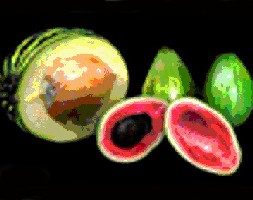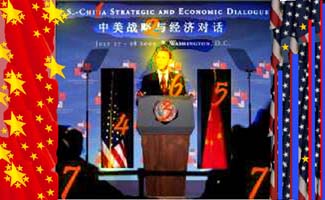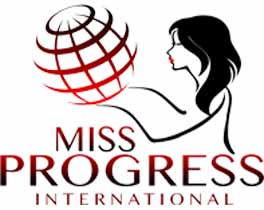
PLASTIC OR MUTANT FOOD by Malïa Lillaz – Introduction on the reasons why analyzing the regulatory regime provided by International Trade
law regarding food safety : Analysis of the Agreement on the Application of Sanitary and Phytosanitary Measures, Scope of the SPS Agreement, Scientific evidence,Risk Assessment Process, The value of the Precautionary principle and the implications of Article 27 (3 b) of the TRIPS, Agreement, The Beef Hormones case, Domestic regulation: the example of Europe, Scope and implications of Article 27(3 b) of the TRIPS Agreement, The problems resulting from the analysis of TRIPS Art. 27(3 b) and the SPS Agreement and their implications on Genetically Modified foods, Growth process of GM vegetables and fruits, The use of pesticides and pollenisation, Biodiversity, Conclusion.
Introduction – Victims of cancer are advised to eat a maximum of organic food products, with less additives for example and to drink filtered or mineral water instead of tap. Food and water are the two necessary elements needed for human survival. Unfortunately, today it is impossible in most supermarkets (Netherlands, Spain, France, U-S…) to find organic food and it is much more expensive. Because of the lack of consensus among scientists as regards their adverse effects, Genetically Modified foods are traded.
For the purpose of trying to understand the issues of the debate, we must discuss about Monsanto, one of the leading transnational corporations in the GM food market, it is also said to be the first one to have done transgenic manipulations and to invent aspirin and napalm’. This corporation has been founded in the US but for example a company in Belgium is part of this corporation and exploits GM crops from which vegetables are commercialized and sold in supermarkets. In France, they were formerly banned for growing in fields, then strongly opposed by some farmers but potatoes and strawberries were already sold in all french supermarkets.
Only at an international level the problem can be solved. Since money rules the world and international trade law regulates its flow at this level, the two first parts are dedicated to the few international legal agreements regulating the process of marketing of GM foods: the SPS and TRIPS Agreements of the WTO. The third part is a critical analysis of the main arguments in favour and against GM food and the patentability of seeds.
Analysis of the Agreement on the Application of Sanitary and Phytosanitary Measures
Scope of the SPS Agreement – The analysis of the SPS Agreement hilights the difficulties posed by the need to satisfy both biosafety and free trade requirements. These two aims represent the centrepiece of the legal, ethical and political debate on GMOs in general and on the implications of Art 27 (3 b) of the TRIPS Agreement.
A sanitory or phytosanitary measure means ‘any measure applied to protect human or animal life or health within the territory of the Member from risks arising from additives, contaminants, toxins or disease-causing organisms in foods, beverages or feedstuffs’. Genetically Modified Organisms are not included in the list as such, although now traded worldwide. To fall within the scope of the SPS, GMOs would thus have to be qualified by all scientists in the world as disease-causing organisms? Then all scientific researchers should become obliged to focus their research on the possible adverse effects on GM food than on their development before commercializing them? People don’t know on what research science is focusing on, trade or food safety? The SPS Agreement is the only agreement that could control at an international level the types of research carried and their purposes.
Regarding its scope, ‘This Agreement applies to all sanitary and phytosanitary measures which may, directly or indirectly, affect international trade’. The terms ‘indirectly’ and ‘may’ open the door to wider interpretation, making it possible to include measures likely to have only a minor effect on international trade, even if there is no certainty at all regarding those potentially harmful measures to the freedom of international trade. It seems to reveal the fact that the intention of the SPS Agreement’s drafters was more to protect the freedom of international trade than to protect the ‘human, animal or plant life or health’ from a certain laxism in terms of precautions took by States (WTO members). In fact, members have the right to take sanitary and phytosanitary measures necessary for the protection of human, animal or plant life or health’ but it does not compel or even invite them to do so. Members are not incited to take such measures, ‘states shall’ would have been more appropriate but no, they are only allowed to do this, the obligation relies more on the need to protect trade from discriminatory or abusive implementation of such measures.
Once again the main factor affecting the issue of GMOs is the willingness of governments to act with good intentions, how could any improvements be made if the few Members bringing claims to the WTO Panels, do this only as a disguised means to restrict trade. The progress of Law in respect of GMOs is very slow, given the strenght of protection confered to the principle of freedom of trade against protectionist measures, compared to the precautionary approach (or principle?) in this Agreement. After analysing the scope of the SPS Agreement, it is necessary to discuss its provisions on scientific evidence.
Scientific evidence – The SPS Agreement deals with the issue of lack of scientific evidence, when it is considered ‘insufficient’ a member ‘may’ adopt sanitary or phytosanitary measures but these must be based on available ‘pertinent’ information. This raises the question of the types of factors taken into account when considering the value of scientific reports because the term ‘pertinent’ is not defined in the SPS Agreement.
A broader and more ethical question raised is the one regarding the independence of science researchers from the political field. It would be more appropriate to talk about interdependence between the two simply because science needs huge amounts of funds for research purposes and only entities such as governments or transnational corporations, or very generous multi billionaire individuals (very rare) seem likely to have the financial capacities to provide them with such funds. What seems to be crucial is that scientists remain independent and objective as regards the research reports they transmit to authorities in charge of the control of transgenic-processed products. Another Article stipulates that ‘In a dispute under this Agreement involving scientific or technical issues, a panel should seek advice from experts chosen by the panel in consultation with the parties to the dispute’. Basically, this seems to show that the scientists are chosen by the panel, the parties to the.dispute are simply consulted so it is imaginable that the panel could possibly choose arbirarily scientists in favour of one or the other party. Thus, this provision could be seen as being slightly weak if one wants to give it the value of guarantee against the corruption of science. If there were international or at least domestic binding rules to provide for a sort of anonymous research system, or at least independent from the legal or corporate sphere, the improvement would be evident. Let’s now focus on the means provided by the SPS Agreement to evaluate the risks for human health arising from food products.
Risk Assessment Process – The Risk assessment as defined in the SPS Agreement, requires ‘the evaluation of the potential for adverse effects on human or animal health arising from the presence of additives, contaminants, toxins or disease-causing organisms in food, beverages or feedstuffs’. The problem with the formulation of this article is that it appears to be limited to substances present in the food. It doesn’t mention the food itself whereas it should. It is not only some pesticide inside a vegetable that involves risks, but the vegetable itself since it has been modified by transgenesis techniques, it is no longer the same product with the same nutrients or even taste.
In the Beef hormones case, the Panel interpreted this definition and considered firstly that states ‘should identify the effects on human health’ and secondly that ‘if any such effects exist, evaluate the potential or probability of occurrence of such effects’. This second part of the ‘two-step risk assessment process’ looks almost like an oxymore, states are required to evaluate the possibility of occurrence of adverse effects only if they already exist!
Basically in this risk assessment process, there is not even provision to encourage members to evaluate the risk in a preventive way. It seems like the International Trade Law regarding food safety has little capacity to be preventive, thus becoming more a type of law to cure problems than to treat them at the source.
Trade in goods affects the living conditions of human beings, the products surrounding them in their environment. Whereas trade in food, affects the life itself, of human beings, since the life of humans depend on their health. Free trade and free competition are the principles prevalent nowadays, their effect on economy is great, but in the case of trade in food products shouldn’t the precautionary principle become prevalent? The Panel in the beef hormones case said that this ‘two-step analysis (…) does not appear to us to be substancially wrong’.
The new problem arising with GMO touches food generally, not just beef. That’s why, some articles of the SPS Agreement which is the main international trade law instrument to regulate problems linked with food safety, should be amended. This risk assessment procedure should include in its list GMO vegetables and fruits as a start. Food itself so that states would be encouraged if not obliged to control the eventual risks presented by GM food before trading GM products.
A study conducted by Arpad Pusztai, a biochemist, revealed the effects of transgenic potatoes on rats. He observed ‘anomalies in the functioning of organs and a dicrease in the level of defenses of the immune system’, which basically protects rats and humans as well, resisting to diseases that infects them or, at least to cure them out of the body. Surprisingly he was fired from the ‘Scottish Insitute’ for which he was working for. What is less surprising is that ‘this same institute had received subventions from Monsanto’. This study reveals the need to assess the value of the precautionary principle in International Law as regards food safety.
The value of the precautionary principle and the implications of Article 27 (3 b) of the TRIPS Agreement
The Beef Hormones Case – The European Communities expressed their view on the value of the precautionary principle in the Beef Homones case which was given the weight of a ‘general customary rule of international law or at least a general principle of law’. The Unites States considered it was ‘more an approach than a principle’11 and Canada was reluctant as well to affirm that this principle had yet cristallized ‘into one of the general principles of law recognized by civilized nations’11. However criticable this might be, the issues at stake at the time must be kept in mind.
Beef hormones’ effects on health were experienced in Europe, Blood contamination in France, Mad cow disease in the UK, people died and many more got sick so public opinion awoke. It seems unfortunate that the public authorities and citizens themselves finally react when the wrong is already done. The difference with GMOs is that they are likely to have incidental effects on health but on the long term, such as the accelerated development of cancerous cells. Whereas in the Beef hormones case, the disease developed suddenly. When one researcher for the C.N.R.S (French Natinal Institute for Scientific Research) observed those effects on guinea pigs tested for the consumption of transgenic food and transmitted the information to its superiors, he was invited not to ask hiself too much questions and to modify his report on the experiments he made.
This case illustrates the shameful political influences on the legal system. In fact, Europe supported the precautionary approach in this case, while the potential riks were disregarded at the political level before the contaminations. The same is happening today in Europe, since no GMOs have yet had the effect of contaminating simultaneously a large enough group of individuals to alert public authorities and because there is no international consensus between all the scientists on the potential effects of GMOs in the development of diseases such as cancers. Today, in Europe GMOs are as much legal as they are in US. It is shameful because the EC supported the precautionary principle in the Beef hormones case because it did not expect those adverse effects and a large scale contamination. Why would the EC have more certainty today as regards health risks induced by GMOs than it had at the time of the Beef hormones cases as regards the risks presented by these hormones? After analysing the dispositions on food safety in International Law (SPS and TRIPS Agreements), it is important to do the same with at least one example of domestic regulation to discover which law is enforceable.
Domestic regulation: the example of Europe – Since 09/08/2004, 17 species of genetically modified seeds derived from Monsanto’s corn MON 810 are listed in the common catalogue of varieties of agricultural plants species of the European Union. Of course, GM strawberries were produced in Spain long before that and potatoes as well in the UK (80s).
Would The European Union have changed its position regarding the Precautionary principle? Even if those Genetically Modified vegetables must be previously evaluated and controled under the 2001/18 Directive, it is a pity to observe that there is no legislation ensuring the respect of distances between organic and GM crops. This fact may lead to some doubts regarding the intentions of the EC community because in 2004, there was no more consensus among scientists on the possible future or even actual adverse effects of GMOs than there was at the times when beef hormones were authorised for the first time in Europe.
In the Beef hormones case, the Appellate Body did not want to take a position on the satus of the precautionary principle in International law. Regarding the scientific evidence relating to ‘carcinogenic or genotoxic potential of entire categories of hormones’, it concluded that their treatment by the Panel did not ‘amount to a distortion of evidence’ and that it did not require Members to change their appropriate level of protection of human, animal or plant life or health. This report almost clearly shows that the Appellate body appointed in this case by means of the WTO procedural system, disregarded the value, (or gave it a very light weight) of the Precautionary principle. This principle is the legal basis to promote measures aimed at dealing with problems such as food safety, human health in a precautionary way.
“Prendre des précautions” in French means taking measures or act with the aim of trying to avoid the occurrence of something. Given the weaknesses of the SPS Agreement and the Precautionary principle to provide for an acceptable level of protection for human health, it will be interesting to analize Art. 27(3 b) of the TRIPS Agreement to clarify the possible reasons for such a fast commercialization of products deriving from a transgenese technique said to have been discovered only since 1973. Before that it is necessary to specify the fact that the enforceable laws dealing with OUR food safety are mostly International and European laws, simply because our food products are mostly produced abroad so that in most cases where there are conflicts of domestic laws, the prevalent law is the European or International one. Both are much weaker and laxist than domestic laws so that members don’t oppose ratification.
Scope and implications of Article 27(3 b) of the TRIPS Agreement – Food is not a material product but a basis of life, if you control food, you control peoples’ life.
The SPS Agreement regulates export measures on food safety and the TRIPS Agreement regulates the patentability of seeds or breeds (monopole of exploitation).
Norway has recently built a seed bank or seed storage facility 400 feet underground of a frozen Arctic mountain located in the Svalbard Islands. It is said to have been built to ensure worldwide food supply in case of drastic climate change or accidents such as a meteorite crash on earth for example. But it could also be seen as a means to keep organic seeds secure, while building monopolies of exploitation of GM vegetables all over the world until the time when it is no longer possible to grow organic ones.
For example, Soil & Crop (S&C) Improvement B.V. won the Captain Hook Awards for Biopiracy in 2004 because it declined to provide further details of the existing Memorandum of understanding with the Ethiopian Government which offers joint ownership of teff varieties developed by ‘S&C’. This firm did not do anything illegal, and that is the problem not mentioned by this NGO. Teff is the basis of the Ethiopian diet since not so many crops are able to grow in dry areas of this country. Morever, Ethiopia is the first country since the invention of plant domestication (=agriculture) that grew teff crops. Archaeological researches and studies have prooved that the first time teff ever grew on earth (it’s birth) occurred in Ethiopia. This is happening with rice and the BT cotton in many Asian countries such as Thailand, Cambodia and India, ‘former’ colonies in Latin America, Africa and the Carribean. But what could be considered as robbery in the case of teff in Ethiopia is that there is a joint ownership (agreement not even respected) of teff varieties whereas it originated in Ethiopia. It is not that difficult for such companies to slightly modify genetically a crop to claim it is its own invention so as to patent it, exploit it with a monopoly, thus enslaving farmers because of forcing them to pay for growing their own crop. The patented secret is just a manipulation, not exactly a creation or invention so it is not even legal to confer intellectual property rights to something that is not an invention, it is even more true for organic seeds patented although never ever modified.
How could developed countries acquire the right to exploit food exclusively if the result is the concentration of richness and power at a level transcending the legal barriers established by law to regulate trade? Thanks to WTO Agreements like TRIPS. One possible solution would be to strenghten the regulation of international trade in the WTO by way of Ammendments on Article 27 of the TRIPS Agreement and others of the SPS Agreement.
Article 27 (3 b) of the TRIPS Agreement stipulates that : ‘Members may also exclude from patentability: plants and animals other than micro organisms, and essentially biological processes for the production of plants or animals other than non-biological and microbiological processes ’. Micro organisms are the basic organic components of vegetals, animals and humans, but they are allowed to be patented as well as Non-Biological and Microbiological processes (=GMOs).
The consumer lacks the protection of a regulatory regime on the labelling of products to ensure that he knows exactly what he eats. There should be a mandatory labelling of genetically modified vegetables and fruits specifying the fact that they are transgenic, instead of labelling only Organic vegetables so as to sell them much more expensive. Organic food should never have become a special type of food for rich people, labelled to say it is organic=natural. Why natural and normal food would become the exception and Trangenic food the normal basis of our diet since it is not natural but “chemical” food?
An analysis of Article 27(3 b) implications will be necessary to understand how GM foods became legal and traded so fast, as well as an examination of their growing methods to discuss the critical aspects of the issue of food safety.
The problems resulting from the analysis of TRIPS Art. 27(3 b) and the SPS Agreement and their implications on Genetically modified foods
- Growth process of GM vegetables and fruits
I haven’t dicussed the GM breeds of animals because this paper would have been too long but the issues at stake are the same. Here are a few examples: pig, sheep, cow, super-salmon etc…
Does this new type of food genetically modified by humans provides them with the same nutrients necessary for their diet and immune defense system? Minerals and nutrients present in earth are necessary to Human health, transgenic products taste like water because they grow in water (Hydro-growing system under electric light instead of sun light) and are bitter because of fertilizers and pesticides: They lack earth natural nutrients and minerals and sun natural energy, thus needing huge amounts of chemical fertilizers to grow. By a phenomenon of cellular sub-division (almost similar to cloning) these scientist-farmers are able to duplicate vegetal cells while at the same time introducing new genes to those cells, either to improve productivity maximizing the growth of the future crop or to produce seed-less fruits. Some plants are not meant to cross together, and by manipulation of genes, they become seed-less and steril because of the non-natural crossing of different species of plants. It is a means of control of food supply, not just a taste improvement. Farmers in the U-S must pay again every year the crop-breeds to Monsanto (in India, thailand, Cambodia etc…) whereas they could keep some for the next year to regrow them.
I recall that cancer is a cell degeneration process where they duplicate themselves until the birth of a visible tumor… If you buy grapes in the Netherlands or in the U-S each grape has approximately the same size, developing simultaneously and without the little seeds in them (oranges and lemons too). However, these grapes would have well passed the test of Equivalence in Substance, since the colour is the same, the shape not so ugly and the taste quite similar. According to this principle of equivalence in substance, GM vegetables or fruits can be traded if they respect this equivalence, but the main criterias are shape and taste, not the exact equivalent nutrients and minerals necessary to humans’ diet. “Plastic” food, however striking the resemblance might be with organic food, is still simply limited to an esthetic point of view as the true meaning of plastic suggests (“plastic”not as a material, in the visual sense). Since when food is supposed to look good and not taste good?
Especially if it doesn’t and if there remains uncertainties as regards the possible adverse effects on human health due to the use of pesticides and the genes modification.
The use of pesticides and pollenisation – Monsanto crops growing outdoor in fields are the only resisting species to Monsanto’s pesticide called Round Up Ready. It is of course called fertilizer, since it kills all the rest, it leaves all the space and energy to the resisting GM crops, even worms necessary to top soils productivity since they air or ventilate arable land of earth. Many scientists fear this for the future because if all worms die, farmable land will become dry desert. The Fertile crescent is dry land today whereas it is where plant domestication, agriculture, was born. Because of too intensive exploitation of the area and the lack of good irrigation systems. Think of the intensive agriculture industry today.
The natural breeding process of plants consists in the pollenisation by wind and insects, and in animals transporting the seeds after eating them so that they spill them over other areas on earth, waiting for rain and sun to develop24. GM food doesn’t produce seeds, so it is a means of control of food supply, not just a taste improvement. The farmers who try to keep growing organic vegetables see their fields polluted by GM crops’ pollenisation process with the wind. Those who grow GM food are even sued for re-planting corn without paying royalties to Monsanto.
Diseases developed in organic cotton produced in India because of contamination by neighbouring farms’ plantations of transgenic cotton BT in India 22. The same happens in cornfields in Mexico etc… As well as early development (30 years old) of cancers on farmers or people working in, or living next to factories producing the Round up Ready pesticide used in Spain, France, US, Canada and manymore since it is the only one “fertilizing”, enhancing the growth of transgenic plants (the only living thing that doesn’t die in contact with the pesticide). This made me ask myself questions about the purposes of the legalization of biotechnologies and GM foods and the patentability on living organisms. There is a risk that in 2 generations, there will be no more choice, organic crops will have mutate in GM crops because of wind, bees or other.
Biodiversity – In february 8, 2004 the secretariat of the WTO issued a report on its view regarding the relationship between the convention on Biological Diversity and the SPS Agreement where it found that the two Agreements were not in contradiction. I agree since none of them aims to ban GMOs, even when it comes to human alimentation.
The aim of the last protocol of the UN Biodiversity Convention, was clearly to share with developing countries the knowledge on biotechnologies (GMO) and ancient knowledge (useful to develop pharmaceuticals) but not to restrict or prevent the development=expansion of GM food which is a threat to biodiversity. The availability of a legal scheme to allow the patentability of GMOs raises the additional questions of fairness and true intended purposes of Art.27(3 b) and the convention limited to knowledge-sharing purposes instead of biodiversity protection.
The threat to biodiversity is evident since the natural contamination of crops and intended expansion of GM crops and plants is already happening and there is clearly no provision to respect, for ex. In the EC, the distances between organic and Genetically Modified crops.
Conclusion – Would there be a link between the increasing number of cancers those past 50 years and the change in food habits since after the second world war? Why do doctors advise their patients to eat vegetables or rice in case of gastrohenteritis, no meat, cream nor milk? Because they contain toxins giving diseases like flu etc… Also because they finally realized that antibiotics reduces the immune system defences. Could that reveal the hypothetic catastrophic scenario of the fact that generally, in a an intergenerational perspective there would be a decrease inthe human bodys’ immune defences and at the meantime an increase of development of cancers?
Who ever may be the first one who brought life to planet earth, the process of evolution of living organisms (after bacteria and mono cellular living organisms who assemble to form a plant, animal, or human) is going on naturally since millenaires. Whereas the modification by man of the sort of data base mixing the parametres defining our, or plants’, animals’ characteristics is going on since only about 20 years. It is said that the first transgenic manipulations occurred in 1973 in the US , that precisely ten years after the first GM plant grew (1983) , that in 1986 (only three years after) the first essay of a GM plant was made in outdoor fields and that in 1992 the GMOs were for the first time authorised In US and in Europe. This chronology raises questions by itself. What seems to be contradictory is that in only 19 years GMOs were authorised in the food market for humans, simply because of scientific uncertainty.
Think about what will soon be left in the supermarkets, and of the possible effects on the populations of countries who are getting stolen their natural resources by governments putting them in federal reserves like african gold and diamonds or seed banks for food? Most people in developed countries are passive regarding the problems of the developing world but maybe they will start reacting if they realize they are poisoning unconsciously or consciously themselves in their own dreamed democracy. Since maybe their health might be threatened, or interest (taste), there is a hope for a global consumer opposition to GM food in order to reverse the rule of economic markets’ because if people don’t buy, producers don’t sell and change their market strategy. Disinformation and deception are the two major problems.
Since some GM foods can grow in dry land, People in favour of GMOs claim it will save humanity from starvation in countries like Africa, but don’t forget that people suffering from starvation will never have the money to go to the stores where we buy food.
In my opinion possible solutions are: A stronger regulation of international trade in the WTO by way of Ammendments on Article 27 of the TRIPS Agreement and others of the SPS Agreement. The transparency of the WTO procedures should be improved, Mergers and acquisitions controlled in a stricter way in banks, Associations, Science Institutes and Education. Because the high level of uncertainty of the risks implied by a product traded today legally concerns what sustains us alive not as an individual, local, national, etc. but as a specie, the human kind.
A question will remain open however: did GM food ended up in the market legally because of a lack of information to the people or because of the so-called uncertain scientific evidence, or both? In french evident is the adjective for the name évidence and it means obvious, whereas in legal English it means proof , the slight nuance in the meaning between proof and evidence illustrates the intricate tensions of law itself.
Le monde selon Monsanto : Marie Monique Robin, Television documentary, ARTE channel.
Annex A, Article 1 (b) of the Agreement on the application of Sanitary and Phytosanitary measures.
Article 1 (1) of the Agreement on the application of Sanitary and Phytosanitary measures.
Article 2 (1) of the Agreement on the Application of Sanitary and Phytosanitary Measures.
Article 5 (7) of the Agreement on the Application of Sanitary and Phytosanitary Measures.
Article 11 of the Agreement on the Application of Sanitary and Phytosanitary Measures.
Annex A, Paragraph 4 of the Agreement on the Application of Sanitary and Phytosanitary Measures.
The Beef Hormones Case WTO Panel.
Report of the Appellate Body on EC Measures concerning Meat and Meat Products (hormones): AB-1997-4 /WTO Panel
The Guardian Newspaper, Tuesday15 January 2008:“Arpad Pusztai: Biological Divide”
Le monde selon Monsanto : Marie Monique Robin, Television documentary, ARTE channel. Apologies for not remembering the name of this scientist.
Report of the Appellate Body on EC Measures concerning Meat and Meat Products (hormones): AB-1997-4 /WTO Panel
Le monde selon Monsanto : Marie Monique Robin, Television documentary, ARTE channel.
Dominique Aguilar: http://www.eurogersinfo.com
Report of the Appellate Body on EC Measures concerning Meat and Meat Products (hormones): AB-1997-4 /WTO Panel
www.cbc.ca/news/story/2008/02/26/tech-seed-vault.html
www.captainhookawards.org/winners/2004_pirates
Guns, Germs and Steel : Jared Diamond. P.126 table 7.1 “Examples of early major crop types around the Ancient world”. 2005, Norton N.Y.
Article 27(3 b) of the Agreement on Trade-Related Aspects of Intellectual Property rights.
www.no-patents-on-seeds.org/
People can go check it themselves at the supermarket and compare the taste with organic food from the biomarket where oranges have the little hole on top, sign of the branch holding the fruit from the tree. GM Oranges after 9 days in humid space (by your window, do the test) start duplicate, a little piece of orange with its skin goes out of your GM orange’s skin, without the branch. A fruit from a tree has nothing to do with this Orange able to grow by itself not underground like natural fruits coming from trees whose roots are under earth.
http://www.wto.org/english/docs_e/legal_e/27-trips.pdf
Le monde selon Monsanto : Marie Monique Robin, Television documentary, ARTE channel.
Television documentary , apologies for not remembering its name and authors.
Guns, Germs and Steel : Jared Diamond. 2005, Norton N.Y.
Or by Biopiracy, introducing GM crops in organic fields to pollute the fields then sue the famers.
http://www.twnside.org.sg/title2/service229.htm
http://www.cbd.int/convention/convention.shtml
Dominique Aguilar: http://www.eurogersinfo.com
The Guardian Newspaper, Tuesday15 January 2008:“Arpad Pusztai: Biological Divide”








